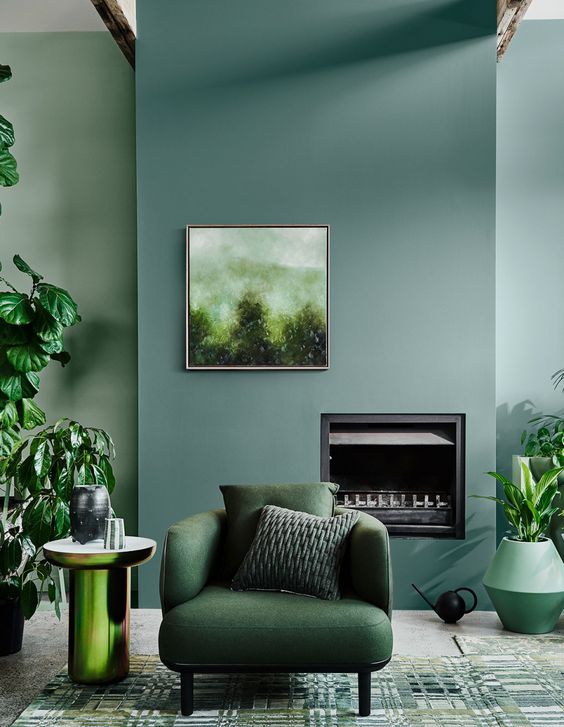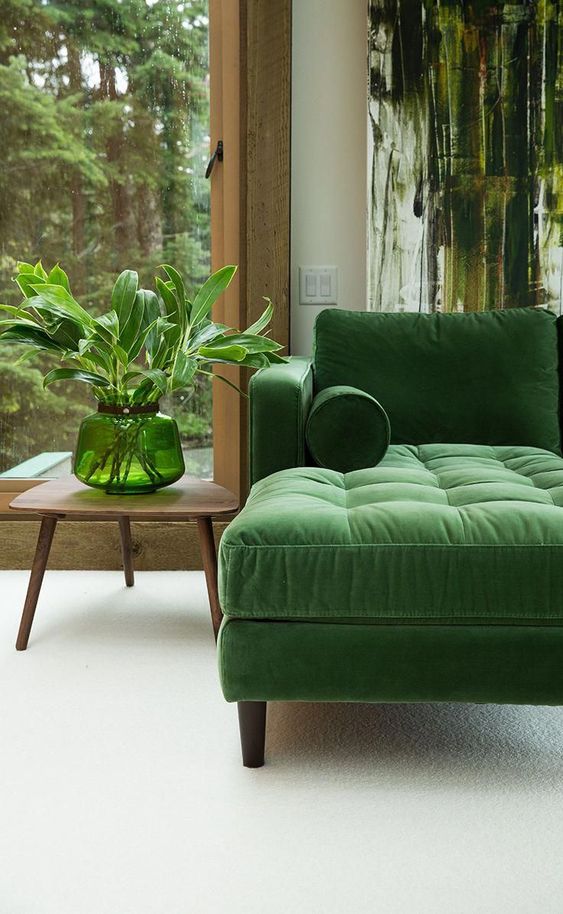Day after day a new building adorns the streets, replacing the untamed wilderness. Innovation has become a synonym for efficiency, modernity and technology but it does not have to be in opposition to nature. People have begun to wake up from the iron haze and the obsession with mass production that drove so many creations since the Industrial Era. Today, true innovators seek progress through sustainable designs and solutions that combine the needs of humans with the environment’s wellbeing. Each one of us can now become part of this movement and join the ranks of a groundbreaking generation by cooperating from the stage of our homes. How do we prove that we can live in perfect symbiosis with nature? The solutions are numerous but we can begin by turning our interiors into more organic spaces without giving up on modernity or aesthetics.

Choosing natural elements
Wood has been admired throughout the centuries for its resilience, elegance and natural appeal. This material requires little to no maintenance, hardly ever losing its original beauty. As a matter of fact, wooden furniture never goes out of style; its timeless value comes from its long history with humanity, accessible to the humblest of homes as well as for palaces and temples. Wood is therefore an ever-present piece of wilderness we keep close to our hearts under the protection of our home.

Marble is among the most sophisticated natural materials one can find. This limestone has given life to some of the most stunning statues in the world such as the Parthenon’s Elgin marbles and Michelangelo’s David. Those who have dared to go big with this stone have also left behind architectural treasures that are still admired to this day; among them the Taj Mahal mausoleum and the Odeon of Herodes Atticus. To erect a single of these creations in the past took years if not a lifetime, but today we can line our house with this material without subjecting ourselves to the sacrifices and endeavor that ancient civilizations faced. Nonetheless, any approach to marble can still be seen as an art-form; since something as simple as selecting the right type of marble requires a careful eye and an artist’s mind to merge it harmoniously with our surroundings.

Rattan and wicker are staples of outdoor furniture that are often overlooked next to grand velvet sofas and glass side tables due to their simplicity. The beauty of these modest yet classic materials may not be prominent but it is unmistakable. Their value lies in their resistant composition and elegant lightweight aesthetic. Both are key elements in garden furniture thanks to their weatherproof nature, their versatility, durability and flexibility. Not only is wicker and rattan furniture easy to maintain but it is also an affordable luxury that anyone can enjoy while sitting by the pool looking at the sunset or from the comfortable terrace of a sophisticated café.

Sustainable products
A way to reduce our environmental impact is by selecting organic materials that are quickly renewable such as wool, hemp, bamboo and oak. One can even choose to incorporate materials that have been reclaimed from other projects and in doing so we will be restoring their life and giving them a new purpose. Another option is to acquire locally sourced products that support both the environment and our community. In other cases the biggest changes are in fact the least noticeable. We can start embracing a sustainable lifestyle by first switching to more efficient energy sources that are renewable and non-carbon based. Saving energy does not have to be complicated, we can even achieve this by using curtains or drapes that retain the cold air inside and the hot air outside. The opposite case can also be accomplished by turning to carpets as thermal insulators.

Transparency is key; we all crave the truth and value honesty above illusions. Because of this, sustainable companies will be open about the materials they sell and where their products come from. Therefore; always remember to look for brands like KMP that offer information about their products’ origins and certifications of sustainability. At the same time, some points one should have in mind while evaluating the sustainability of certain products or materials are the following: A) how the manufacturing of the design impacts the environment B) what are the impacts of the manufacturing products over the health of the people making it C) the amount of energy required for the making of the product D) how does its presence in your environment impact your health, and E) where it will go once you are done using it.

Floral inspiration
There is no better way to pay tribute to nature than by weaving its life into our interiors. Adopting plants and flowers to adorn indoor spaces results in more than an aesthetic appeal; studies have proven that this trend can benefit us in many ways. On the one hand, plants can be therapeutic, they reduce stress and fatigue to boost your productivity, concentration and creativity. The way this works is by absorbing the toxins from indoor air pollution and replacing these pollutants, mold, and viruses with replenished oxygen. At the same time, the exposure to nature also elicits a calming effect similar to the one we feel while walking through a park. This is because being in touch with nature brings forth comfort and energy to accomplish our missions.

The ephemeral beauty of flowers is something that we cherish even more for knowing their days are counted. In a matter of seconds, their vibrant and colorful presence brightens the atmosphere in any room and their unique scent can give life to our memories. Next to the changing nature of flowers, other plants such as succulents and cacti, offer stability. Their ability to withstand the hardships of time without requiring much effort to sustain their beauty is a clear example of nature’s endurance. Regardless of a person’s plant of choice, one can be certain that caring for something so delicate that demands little of us and yet gives plenty will bring out the best in us.


